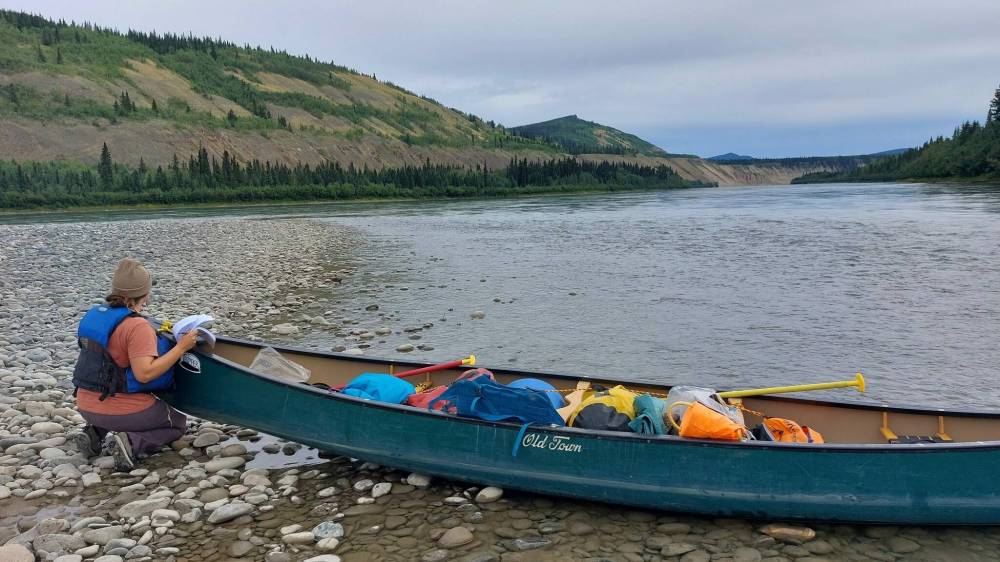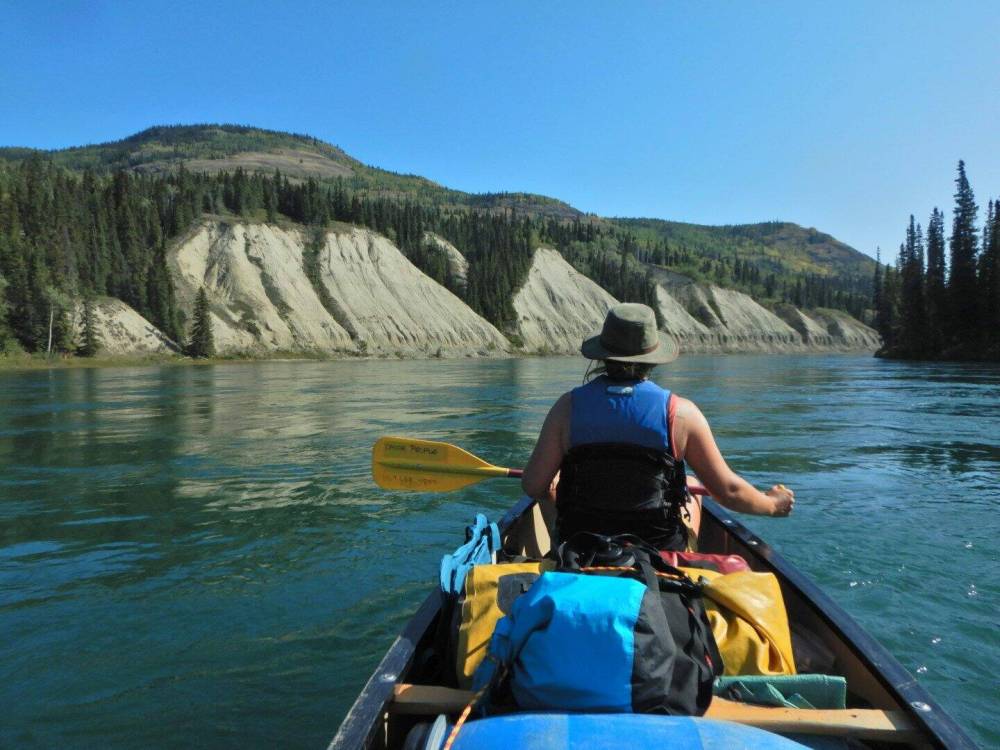Canoeing the Yukon River
Advertisement
Hey there, time traveller!
This article was published 20/09/2023 (798 days ago), so information in it may no longer be current.
Gold was discovered on Aug. 17, 1896, near the Klondike River in Canada’s rugged and remote north. As news slowly spread outside the region, miners from around the world flocked to the Yukon to seek their fortunes. At that time, before the arrival of railways and highways, the only way to reach the abundant goldfields was via the mighty Yukon River.
The name ‘Yukon’ was derived from the Gwich’in term, meaning ‘great river’ – a fitting moniker for the third-longest river in North America. It winds through several First Nations lands, including traditional territories of the Ta’an Kwach’an, the Kwanlin Dun, and the Trʼondek Hwechʼin. It stretches 3,190 kilometres from its headwaters at Atlin Lake in northern British Columbia, up into Yukon Territory and across Alaska, before ultimately dispersing into the Bering Sea.
My niece, Brittani Schick, and I recently paddled a 706-kilometre section of the Yukon River by canoe, starting from Whitehorse. Upon arriving in the city and seeing the waterway for the first time, I’ll admit to being hugely intimidated. With a current of eight to 12 kilometres per hour, it flows fast. And it’s wide, too, spanning 100 metres at the point where we would launch.

Photo by RoseAnna Schick
Travel columnist RoseAnna Schick and her niece, Brittani Schick (pictured), canoed over 700 kilometres along the Yukon River last month.
In that moment, it was inevitable for doubts and fears to come creeping in. I couldn’t help but wonder… were we crazy to want to paddle this river? Could we even physically do it? Suddenly fully aware of what we were up against, I honestly didn’t know if it was possible.
Despite the initial feeling that maybe we were in over our heads, I tried not to let it overwhelm me. Instead, I focused my thoughts and energy towards the challenge that lie ahead, of reaching Dawson City in two weeks or less. We were two smart, strong and adventurous women. We were both determined that yes, we could do it. We would do it. Come hell or high water. Perhaps even both.
We set out from the heart of Whitehorse on a sunny Sunday morning at the site of Kanoe People, where we had rented our Old Town canoe, equipment pack, emergency supplies, and camp stove. We also rented a food barrel which we packed to the brim with 14 days of provisions, including a tasty stash of freshly-made beef jerky from Miller’s Meats in Winnipeg. If nothing else, we’d be well-fed.
We were giddy with both excitement and anxiety as we ventured away from Whitehorse and into the great unknown, stroke by stroke. We were welcomed by eagles soaring silently overhead, as we glided swiftly and not-so-silently over the sparkling surface. Beyond the edges of our canoe we could see through the shimmering aqua-green all the way down to the river bottom, and marvelled at how clear the water was. We also began to learn first-hand just how fast it was, too.
We were as ready as we could be for the impending journey that was now upon us. All I could hope for was that it wouldn’t bring too much hell. And just enough high water.

Photo by RoseAnna Schick
The Yukon River stretches 3,190 kilometres from its headwaters at Atlin Lake in northern British Columbia, up into Yukon Territory and across Alaska, before ultimately dispersing into the Bering Sea.
More to come: My next Travelations column will continue our voyage from Whitehorse to Dawson City on the mighty Yukon River, and the crossing of massive Lake Laberge.

RoseAnna Schick
Travelations
RoseAnna Schick is an avid traveller and music lover who seeks inspiration wherever she goes. Email her at rasinspired@gmail.com
Our newsroom depends on a growing audience of readers to power our journalism. If you are not a paid reader, please consider becoming a subscriber.
Our newsroom depends on its audience of readers to power our journalism. Thank you for your support.




